We arrived at the Sesriem Camp without too much confusion, as the signage was fairly easy to follow. It was early enough in the day where we had a couple of hours until dark, which is a good thing because it took a while to check in at reception and work out going into the park in the morning. Fortunately, in contrast to what was indicated on the internet, they had a small food store located in the same building as the reception, and the prices were surprising under the "gouge" area. I bought 6 bottles of ice-cold beer that went down oh so good once we set up our camp. We were right across from the camp pool, which was small and moderate in comparison to the ones we saw in Etosha. The ablutions weren't too far either, so it was a convenient spot. It's still 70km to Sossusvlei once you get past the gate into the park, which is right at our camp. This entire area is all part of the Namib Desert, and it's considered the driest area on the planet. How that's measured compared to Death Valley, the Sahara, or any other places is beyond my knowledge, but I can vouch for its dryness. We cooked burgers using a campfire for the first time, as we purchased wood and starting material before coming to Sesriem. The night sky was showing the same spectacular show it had in Damaraland and Etosha, only more so as the artificial light was almost non-existent here. The night was cooler here in the desert, and we had to get up around 4am to be at the gate around 4:45 when it opened and allowed the line of vehicles in, as all made a bee-line to the two main stops, Dune 45, where most of the tourists go, and farther into the park to where Hidden and Dead Vlei were located. To get there you needed your own 4X4 or you parked your vehicle in the lot and took a camp provided 4X4 for a fee or walked it yourself.
After a chilly night's sleep we woke up early to be in the line of vehicles that wait at the gate for the park to open. Getting up early did have one unexpected benefit: it being dark at 4am I could change out of my pj's and into my clothes right at the truck. Changing in the cramped tent was a major pain, and bringing up my clothes for the next day into an already small area was a nuisance. Hardly anyone was awake or near us, so it was much easier than inside the tent. It was an eye-opener too; because that cold morning air hitting the sleeping bag warmed skin of mine snapped my heart into the day! We skipped breakfast, delaying it to later in the morning when we got the first chance. The fact that we were carrying our food around in the truck with us made it easy. We got into line, perhaps the 5th or 6th car at the gate and many more lined up behind us as the morning light just began to turn the eastern horizon deep purple. The guard made his way to each vehicle, checking to make sure the correct paperwork was in hand that showed payment to enter had been made, which we had done the afternoon before. I would say he got to #10 in line, and then he ran back to the gate to allow those he had checked go in. The others would have to wait and allowed access one-by-one as they were verified at the gate. The first group drove into the lifting darkness, and as we penetrated deeper and farther east into the park, the light began to bathe the contours of the dunes in great colors. The speed limit was 60kph, which we were traveling at. However, we noticed the group that started ahead had put some distance between then and us, and some that started behind were passing us. For a while we drove the limit, but then, especially as the light became bright enough to illuminate the landscape I kicked up the speed a little. We passed Dune 45, and there were tourists on it already, almost halfway up. Most if not all the vehicles turned off at Dune 45, it seemed. We pressed on, and after a while came upon a sign that indicated the direction of Dead Vlei. This was the area that was highly recommended by a photographer whose work I found online. There was only one 4X4 truck there, as I had no trouble navigating the soft sand between the car park where you must stop if you are driving a non-4X4 vehicle, and Dead Vlei. We actually passed one of the safari shuttles stuck in the sand along the way. The people that we assumed were the occupants of the truck were already making their way into the dunes. It was a clear, quiet morning with the light becoming more intense and higher in the sky with each passing minute, so we started our way in, following the prints they were making in the sand. I was carrying my backpack with my photo gear of course, and the weight of that pack along with the sandy hills induced a few flashbacks to basic training.
I had been on sand dunes before in the Canary Islands and near the Indian/Pakistan border, but these were quite different. The look, feel, orientation, and, of course, the size. Supposedly the tallest in the world, it was an incredible rush to hike along the crest of one as we did. Coming down the other side in a type of broken run was cool. I had my Columbia hiking shoes tied tightly, so I was pretty lucky (and surprised) that I had minimal sand intrusion. Some steps had my legs sinking calf-deep. We got to the bottom much faster than it took to scale up the dune, of course. We had to go over a few small ridges before finding our way to the bottom or open, dry, bed where water does accumulate when there's enough rain. You can tell water is there sometimes from the cracked earth and animal hoof prints embedded into the crust like the walk of fame in Hollywood. I'm finding it difficult to verbally describe the scene, as visuals are the only true way of conveying what it's like to stand there, in the silence, light hitting the far side of the dune but the shadow cast by the nearside dune covering the cracked-earth floor. We walked and climbed around the area for several hours until we got hungry and the light became too harsh, so we walked back to where the truck was parked. By now there were many more vehicles there, and I moved the truck from the direct sun to under one of the few trees. We set up our table, brought out 2 chairs, and ate the sandwiches we made and had some ice cold drinks in the heat of the day. It was fantastic, with both of us expressing how perfect a cold, Windhoek beer was after our morning. Radhika ended up in the cab, reclining the seat, and having herself a little nap. I chilled out in one of our camping chairs sans shirt and unzipped the legs off the hiking pants getting some Namibian desert sun. That was THE life at that moment, until I heard the clicking of a shutter discovering someone felt the need to photograph me half asleep.
We had visited Sossusvlei and Dead Vlei in the morning, and now we were considering what to do with the afternoon. You can't really see the dunes at sunset, because that's when the gates close and it's at least an hour back to the gate from the Dead Vlei area. The road continues on past Dead Vlei, but I never read anything online that indicated there were sights to be seen there. However, Radhika wanted to check it out so we left our picnic area and drove in further - but not much. We came to an area where I saw a lot of soft sand, and before proceeding further I got out, walking ahead and onto a small rise where I could see more of what was ahead. I saw nothing but sand, sand, and more sand. I turned around, but Radhika was still insistent. I stopped and spoke with two of the safari drivers, asking them what was back there to see. Both said "Nothing", and that was good enough for me. We decided to head back towards our camp and checkout Hidden Vlei, which was on the way and then Sesriem Canyon, which was right near our campsite. Hidden Vlei is where the vehicle park is for those who are not using a 4WD, so we parked there. One of the safari guides waiting in his truck said we have to follow the poles painted black on top that are stuck in the ground. They would lead us to Hidden Vlei. It was a long walk there, passing several interesting formations along the way. Hidden Vlei is not visited by most, as it is a hike to get to compared with the other more accessible places of interest. I would guess it is a 30-minute hike if you don't stop to make pictures, so it was longer for me. It was quiet out there and not another soul around. Overall it was probably close to two hours roundtrip. We made the drive back and parked in the lot along with several other vehicles. We got out and could hear voices in the canyon below. It is not a deep canyon by any comparison. At this point it looked no deeper than 30 feet where people were walking along a trail. We decided to go down and check it out, having several hours of daylight left which should be plenty of time to satisfy our curiosity and get back to the truck. We walked along the route that others were taking, contoured, rocky, some steps to climb, grainy sandy areas - quite an uneventful hike in retrospect. Where we came out of the canyon there was a group of people seemingly being led by an African gentleman. We started to go back the parking lot alongside but outside the canyon, but then the path looked over grown, so we decided to turn around and follow this other group assuming they would get us back to the lot. After a few minutes however, we determined they were not going to the lot but what looked like a lodge. So we quickly decided to just head back the way we came, as the day was getting darker now. No one else was in the canyon now, we were on our own and keeping a steady pace. We got back to the truck, the only vehicle left in the lot, right as the sun was setting on the horizon. A few minutes drive and we were back at our campsite getting ready for dinner and showers. Tomorrow, we would do the same thing over again in the morning and then leave the area to make the 4 to 5 hour drive back to Windhoek, turning in the truck and catching our flight out of Namibia and going south to Cape Town.
The album for this post can be found at: We arrived at the Sesriem Camp without too much confusion, as the signage was fairly easy to follow. It was early enough in the day where we had a couple of hours until dark, which is a good thing because it took a while to check in at reception and work out going into the park in the morning. Fortunately, in contrast to what was indicated on the internet, they had a small food store located in the same building as the reception, and the prices were surprising under the "gouge" area. I bought 6 bottles of ice-cold beer that went down oh so good once we set up our camp. We were right across from the camp pool, which was small and moderate in comparison to the ones we saw in Etosha. The ablutions weren't too far either, so it was a convenient spot. It's still 70km to Sossusvlei once you get past the gate into the park, which is right at our camp. This entire area is all part of the Namib Desert, and it's considered the driest area on the planet. How that's measured compared to Death Valley, the Sahara, or any other places is beyond my knowledge, but I can vouch for its dryness. We cooked burgers using a campfire for the first time, as we purchased wood and starting material before coming to Sesriem. The night sky was showing the same spectacular show it had in Damaraland and Etosha, only more so as the artificial light was almost non-existent here. The night was cooler here in the desert, and we had to get up around 4am to be at the gate around 4:45 when it opened and allowed the line of vehicles in, as all made a bee-line to the two main stops, Dune 45, where most of the tourists go, and farther into the park to where Hidden and Dead Vlei were located. To get there you needed your own 4X4 or you parked your vehicle in the lot and took a camp provided 4X4 for a fee or walked it yourself.
After a chilly night's sleep we woke up early to be in the line of vehicles that wait at the gate for the park to open. Getting up early did have one unexpected benefit: it being dark at 4am I could change out of my pj's and into my clothes right at the truck. Changing in the cramped tent was a major pain, and bringing up my clothes for the next day into an already small area was a nuisance. Hardly anyone was awake or near us, so it was much easier than inside the tent. It was an eye-opener too; because that cold morning air hitting the sleeping bag warmed skin of mine snapped my heart into the day! We skipped breakfast, delaying it to later in the morning when we got the first chance. The fact that we were carrying our food around in the truck with us made it easy. We got into line, perhaps the 5th or 6th car at the gate and many more lined up behind us as the morning light just began to turn the eastern horizon deep purple. The guard made his way to each vehicle, checking to make sure the correct paperwork was in hand that showed payment to enter had been made, which we had done the afternoon before. I would say he got to #10 in line, and then he ran back to the gate to allow those he had checked go in. The others would have to wait and allowed access one-by-one as they were verified at the gate. The first group drove into the lifting darkness, and as we penetrated deeper and farther east into the park, the light began to bathe the contours of the dunes in great colors. The speed limit was 60kph, which we were traveling at. However, we noticed the group that started ahead had put some distance between then and us, and some that started behind were passing us. For a while we drove the limit, but then, especially as the light became bright enough to illuminate the landscape I kicked up the speed a little. We passed Dune 45, and there were tourists on it already, almost halfway up. Most if not all the vehicles turned off at Dune 45, it seemed. We pressed on, and after a while came upon a sign that indicated the direction of Dead Vlei. This was the area that was highly recommended by a photographer whose work I found online. There was only one 4X4 truck there, as I had no trouble navigating the soft sand between the car park where you must stop if you are driving a non-4X4 vehicle, and Dead Vlei. We actually passed one of the safari shuttles stuck in the sand along the way. The people that we assumed were the occupants of the truck were already making their way into the dunes. It was a clear, quiet morning with the light becoming more intense and higher in the sky with each passing minute, so we started our way in, following the prints they were making in the sand. I was carrying my backpack with my photo gear of course, and the weight of that pack along with the sandy hills induced a few flashbacks to basic training.
I had been on sand dunes before in the Canary Islands and near the Indian/Pakistan border, but these were quite different. The look, feel, orientation, and, of course, the size. Supposedly the tallest in the world, it was an incredible rush to hike along the crest of one as we did. Coming down the other side in a type of broken run was cool. I had my Columbia hiking shoes tied tightly, so I was pretty lucky (and surprised) that I had minimal sand intrusion. Some steps had my legs sinking calf-deep. We got to the bottom much faster than it took to scale up the dune, of course. We had to go over a few small ridges before finding our way to the bottom or open, dry, bed where water does accumulate when there's enough rain. You can tell water is there sometimes from the cracked earth and animal hoof prints embedded into the crust like the walk of fame in Hollywood. I'm finding it difficult to verbally describe the scene, as visuals are the only true way of conveying what it's like to stand there, in the silence, light hitting the far side of the dune but the shadow cast by the nearside dune covering the cracked-earth floor. We walked and climbed around the area for several hours until we got hungry and the light became too harsh, so we walked back to where the truck was parked. By now there were many more vehicles there, and I moved the truck from the direct sun to under one of the few trees. We set up our table, brought out 2 chairs, and ate the sandwiches we made and had some ice cold drinks in the heat of the day. It was fantastic, with both of us expressing how perfect a cold, Windhoek beer was after our morning. Radhika ended up in the cab, reclining the seat, and having herself a little nap. I chilled out in one of our camping chairs sans shirt and unzipped the legs off the hiking pants getting some Namibian desert sun. That was THE life at that moment, until I heard the clicking of a shutter discovering someone felt the need to photograph me half asleep.
We had visited Sossusvlei and Dead Vlei in the morning, and now we were considering what to do with the afternoon. You can't really see the dunes at sunset, because that's when the gates close and it's at least an hour back to the gate from the Dead Vlei area. The road continues on past Dead Vlei, but I never read anything online that indicated there were sights to be seen there. However, Radhika wanted to check it out so we left our picnic area and drove in further - but not much. We came to an area where I saw a lot of soft sand, and before proceeding further I got out, walking ahead and onto a small rise where I could see more of what was ahead. I saw nothing but sand, sand, and more sand. I turned around, but Radhika was still insistent. I stopped and spoke with two of the safari drivers, asking them what was back there to see. Both said "Nothing", and that was good enough for me. We decided to head back towards our camp and checkout Hidden Vlei, which was on the way and then Sesriem Canyon, which was right near our campsite. Hidden Vlei is where the vehicle park is for those who are not using a 4WD, so we parked there. One of the safari guides waiting in his truck said we have to follow the poles painted black on top that are stuck in the ground. They would lead us to Hidden Vlei. It was a long walk there, passing several interesting formations along the way. Hidden Vlei is not visited by most, as it is a hike to get to compared with the other more accessible places of interest. I would guess it is a 30-minute hike if you don't stop to make pictures, so it was longer for me. It was quiet out there and not another soul around. Overall it was probably close to two hours roundtrip. We made the drive back and parked in the lot along with several other vehicles. We got out and could hear voices in the canyon below. It is not a deep canyon by any comparison. At this point it looked no deeper than 30 feet where people were walking along a trail. We decided to go down and check it out, having several hours of daylight left which should be plenty of time to satisfy our curiosity and get back to the truck. We walked along the route that others were taking, contoured, rocky, some steps to climb, grainy sandy areas - quite an uneventful hike in retrospect. Where we came out of the canyon there was a group of people seemingly being led by an African gentleman. We started to go back the parking lot alongside but outside the canyon, but then the path looked over grown, so we decided to turn around and follow this other group assuming they would get us back to the lot. After a few minutes however, we determined they were not going to the lot but what looked like a lodge. So we quickly decided to just head back the way we came, as the day was getting darker now. No one else was in the canyon now, we were on our own and keeping a steady pace. We got back to the truck, the only vehicle left in the lot, right as the sun was setting on the horizon. A few minutes drive and we were back at our campsite getting ready for dinner and showers. Tomorrow, we would do the same thing over again in the morning and then leave the area to make the 4 to 5 hour drive back to Windhoek, turning in the truck and catching our flight out of Namibia and going south to Cape Town.
The album for this post can be found at:
http://www.photoshop.com/user/johndp/?wf=sharegrid&rlang=en_US&trackingid=BTAGC&galleryid=e9a66e2560914dbbaca30dc2cfc9d69a
Subscribe to:
Post Comments (Atom)

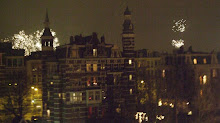
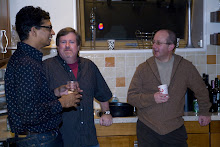

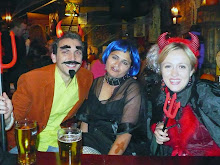

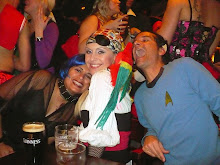












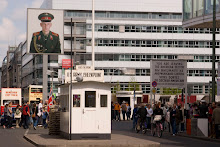

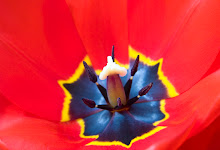
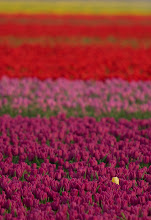
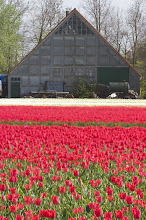
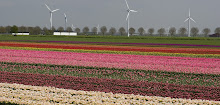














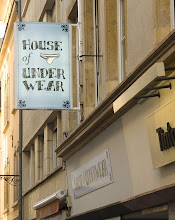



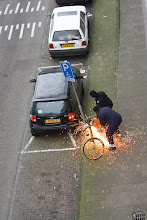
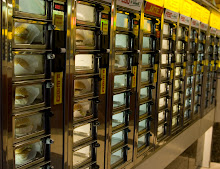



No comments:
Post a Comment